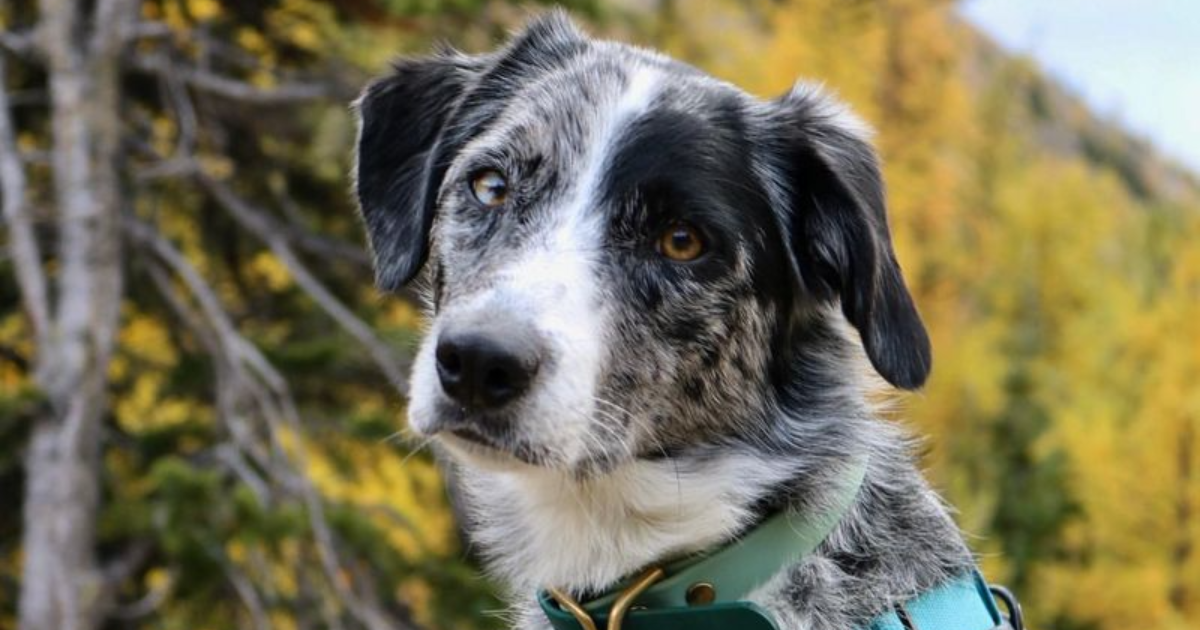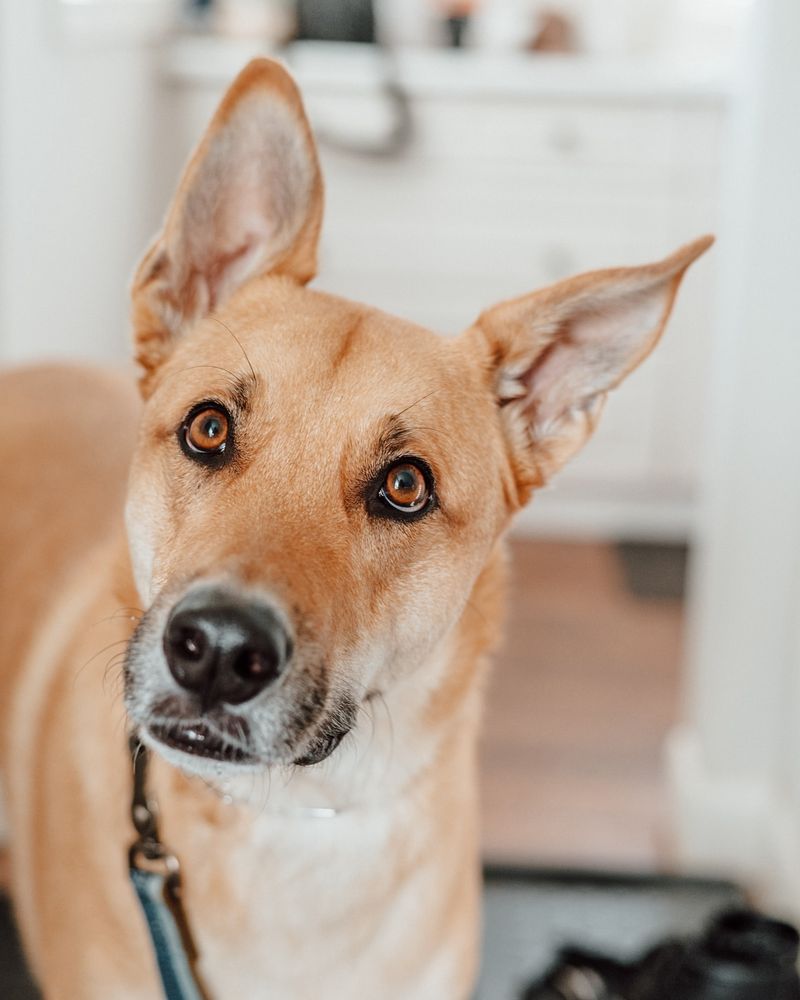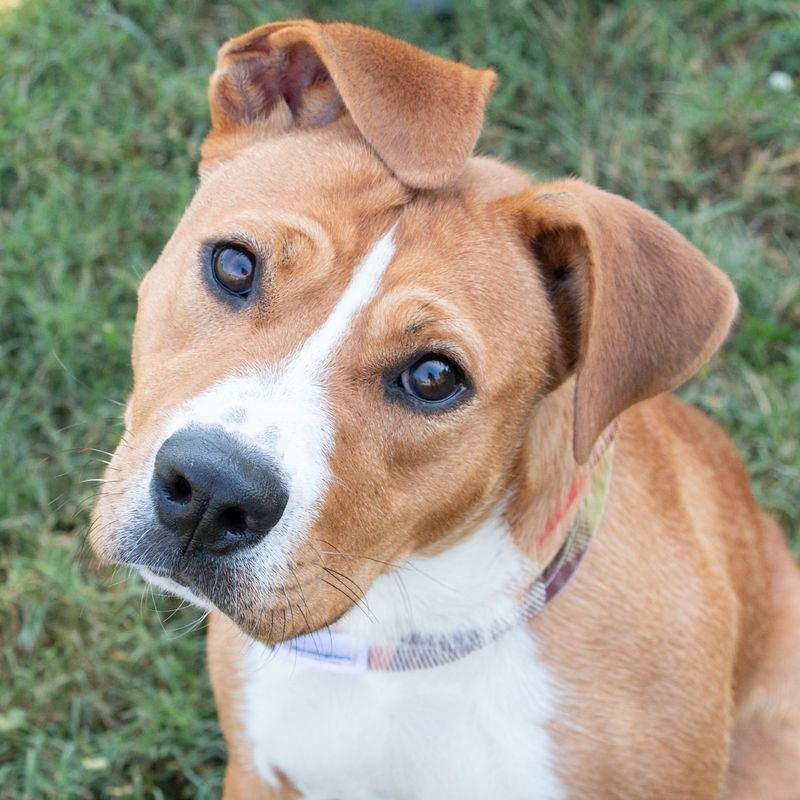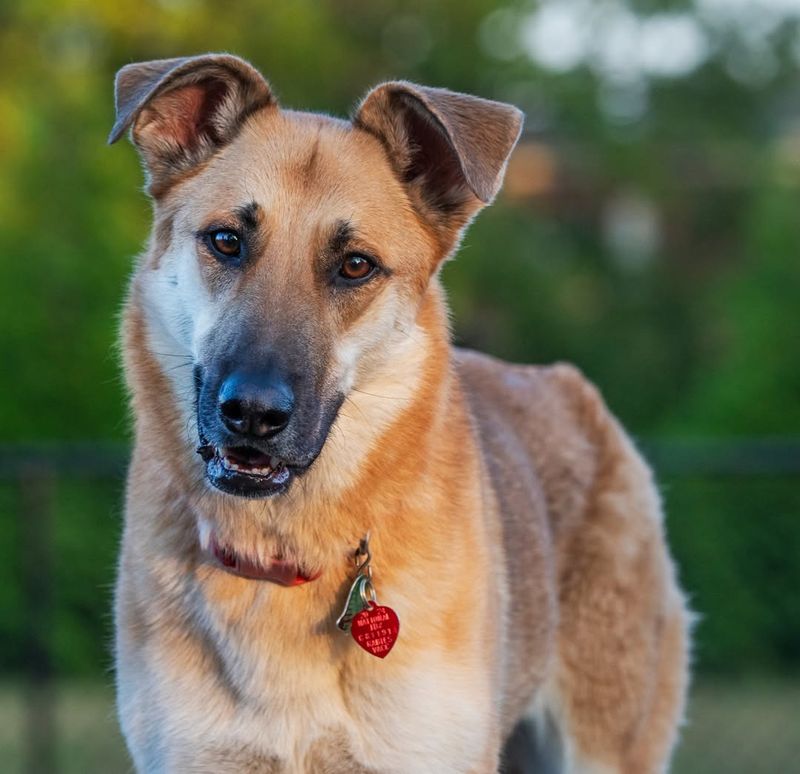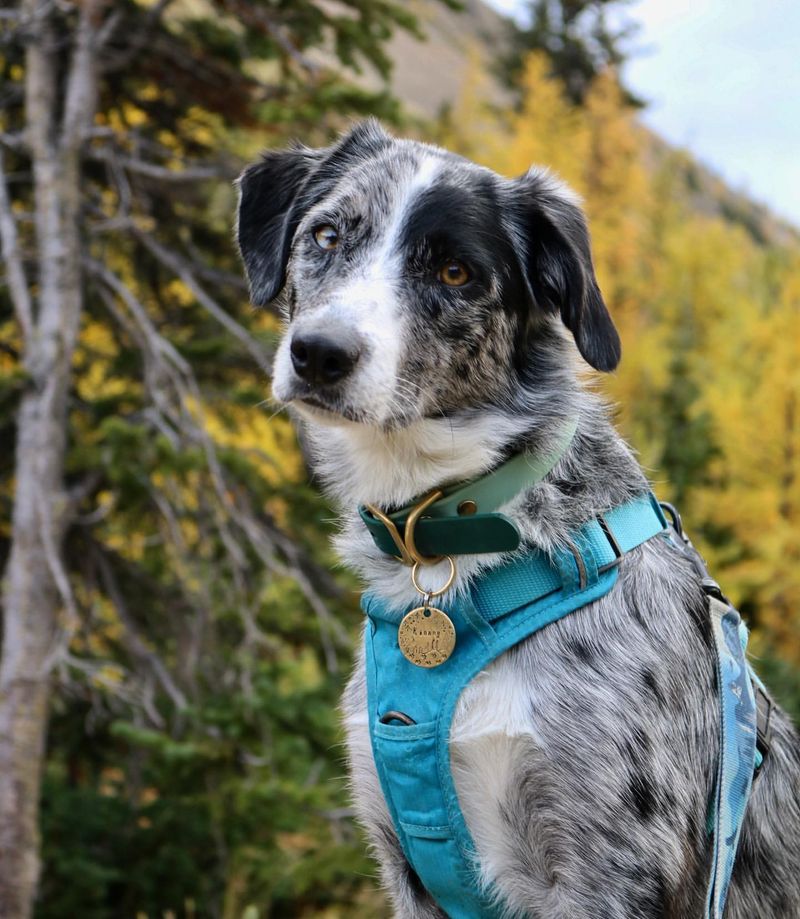📖 Table of Content:
If you’ve ever caught your dog tilting their head, you’ve likely paused to marvel at just how adorable they look. That little tilt—paired with their curious eyes and floppy ears —can melt even the toughest of hearts.
But have you ever wondered why they do it? Are they trying to decipher your every word like a furry Sherlock Holmes? Is it a sign of confusion, empathy, or just another trick to get extra belly rubs?
As it turns out, head tilting isn’t just a cute quirk—it’s packed with purpose. From better understanding their surroundings to bonding with their humans, the head tilt is one of the many ways dogs communicate with us.
In this article, we’re diving into the 9 fascinating reasons why your pup might give you that signature tilt. Trust us, by the end, you’ll appreciate this behavior even more—and probably find yourself tilting your own head in awe.
1. Vision Adjustment
Dogs may tilt their heads to improve their field of vision. This is particularly true for dogs with long snouts or floppy ears. By adjusting their head position, they can see around their physical features that might otherwise block their view.
When a dog tilts its head, it can gain a better perspective on objects or people in front of them. This behavior is often observed when a dog is trying to observe an object at eye level. By moving their head, they align their eyes better to focus clearly.
Owners might observe this behavior when showing their dog a new toy or when the dog is watching someone speak. It’s an adorable way dogs ensure they don’t miss out on the action, showing their curiosity and engagement with their surroundings.
2. Curiosity and Engagement
Dogs often tilt their heads when they are curious or trying to engage with their environment or humans. This behavior is a sign of their active interest in what is happening around them. It’s like their way of saying, “I’m listening and paying attention!”
When a dog encounters something new or hears a novel sound, it may tilt its head to gather more information. This head tilt can be seen as a sign of cognitive engagement as they attempt to process and understand the new stimulus.
For dog owners, recognizing this behavior can be a delightful indication that their pet is interested and eager to learn. Encouraging this curiosity through positive reinforcement can help in training and bonding, making the head tilt a useful tool in understanding canine psychology.
3. Emotional Connection
Dogs are highly empathetic animals and often tilt their heads to connect emotionally with their human companions. This behavior can be a way for them to show they are in tune with human emotions and communications.
A head tilt might happen when a dog senses a change in a person’s tone, body language, or emotional state. By tilting their head, they can better understand the mood and respond appropriately, offering comfort or playfulness as needed.
This behavior is particularly prevalent in breeds known for their emotional sensitivity, like Golden Retrievers or Labradors. For many dog owners, the head tilt is a heartwarming gesture that reflects the deep bond and understanding between human and dog, enhancing companionship.
4. Anticipating Commands
Dogs are intelligent creatures that thrive on communication with their owners. Tilting their heads can be a sign that they’re closely listening and anticipating commands or cues. This is especially common in working or herding breeds.
When a dog tilts its head while you speak, it might be trying to interpret your words, tone, or body language. This attentive posture indicates readiness to act or respond, showcasing their eagerness to please and participate in activities.
For trainers and owners, recognizing this behavior can be an excellent opportunity to reinforce learning. Engaging with your dog during these moments can lead to more effective training sessions and a stronger communicative bond.
5. Breed-Specific Traits
Some dogs tilt their heads more than others due to their breed-specific traits. Breeds with certain physical characteristics, like Pugs or French Bulldogs, naturally have a head tilt as part of their anatomy or behavior.
This behavior might be more pronounced in breeds with larger eyes or unique skull shapes, which can affect how they perceive and interact with their surroundings. For instance, a Pug’s expressive face and head tilt can enhance its charming personality.
Understanding that this behavior can be inherent to certain breeds helps owners appreciate the diversity in canine behaviors. It also allows for a better understanding of how body structure influences the way dogs experience the world.
6. Inquisitive Learning
Dogs are naturally inquisitive, and head tilting can be a part of their learning process. When faced with new experiences or environments, they may tilt their heads to better understand what’s happening.
This behavior is akin to humans asking questions; it’s a way for dogs to gather more information. In puppies, this tendency is especially pronounced as they are in a constant state of learning about the world around them.
By recognizing and responding to this inquisitiveness, owners can foster an enriching environment where their dogs can learn and adapt. Encouraging exploration and answering their ‘questions’ leads to a well-rounded and intelligent companion.
7. Expressive Communication
Head tilting is a form of expressive communication for dogs. This gesture can convey a range of emotions and reactions, from surprise to curiosity. It can also serve as a non-verbal communication tool between dogs and humans.
When a dog tilts its head, it may be attempting to express its feelings or ask for attention. This behavior can also be an invitation for interaction, prompting owners to engage or respond.
Observing and understanding these cues can enhance the relationship between a dog and its human family. By responding to their head tilts, owners acknowledge their pets’ attempts at communication, fostering a deeper bond.
8. Health and Comfort
Sometimes, dogs tilt their heads due to health reasons. An ear infection or discomfort might cause a dog to shift its head position frequently. If this behavior is persistent, it may warrant a veterinary check-up.
Owners should be observant of any additional signs of discomfort, such as scratching or shaking their head. Early detection of health issues can prevent complications and ensure a dog’s well-being.
Being aware of the health-related causes of head tilting helps owners take timely action. Regular veterinary check-ups and attentive care can help maintain a dog’s health and comfort, ensuring a happy and active life.
9. Playful Interaction
Dogs often use head tilting as part of their playful interaction. This behavior can signal excitement and readiness to engage in fun activities. It’s a way dogs express their willingness to play and bond.
When a dog tilts its head during playtime, it might be gauging your reaction or simply expressing joy. This behavior can be accompanied by wagging tails and playful barks, adding to the fun atmosphere.
For dog owners, encouraging this playful head tilt can enhance the quality of playtime. Understanding these playful signals fosters better interaction, ensuring both dog and owner enjoy engaging and lively moments together.
